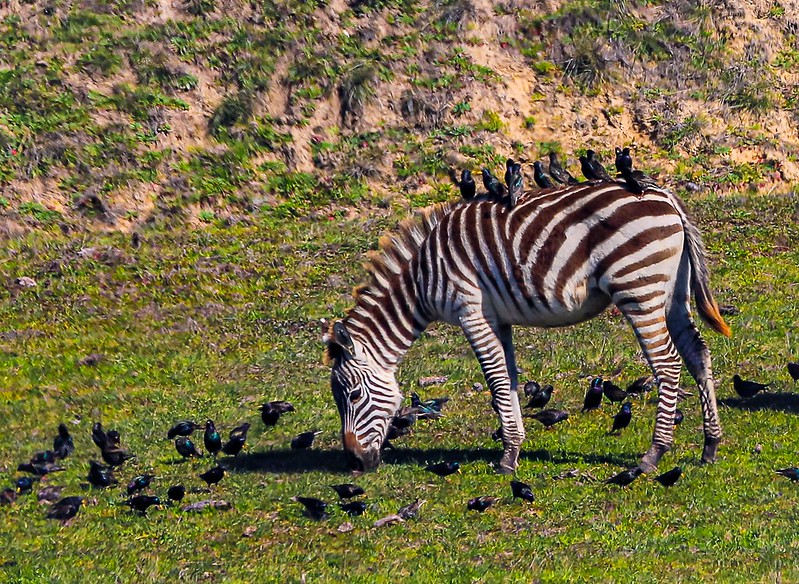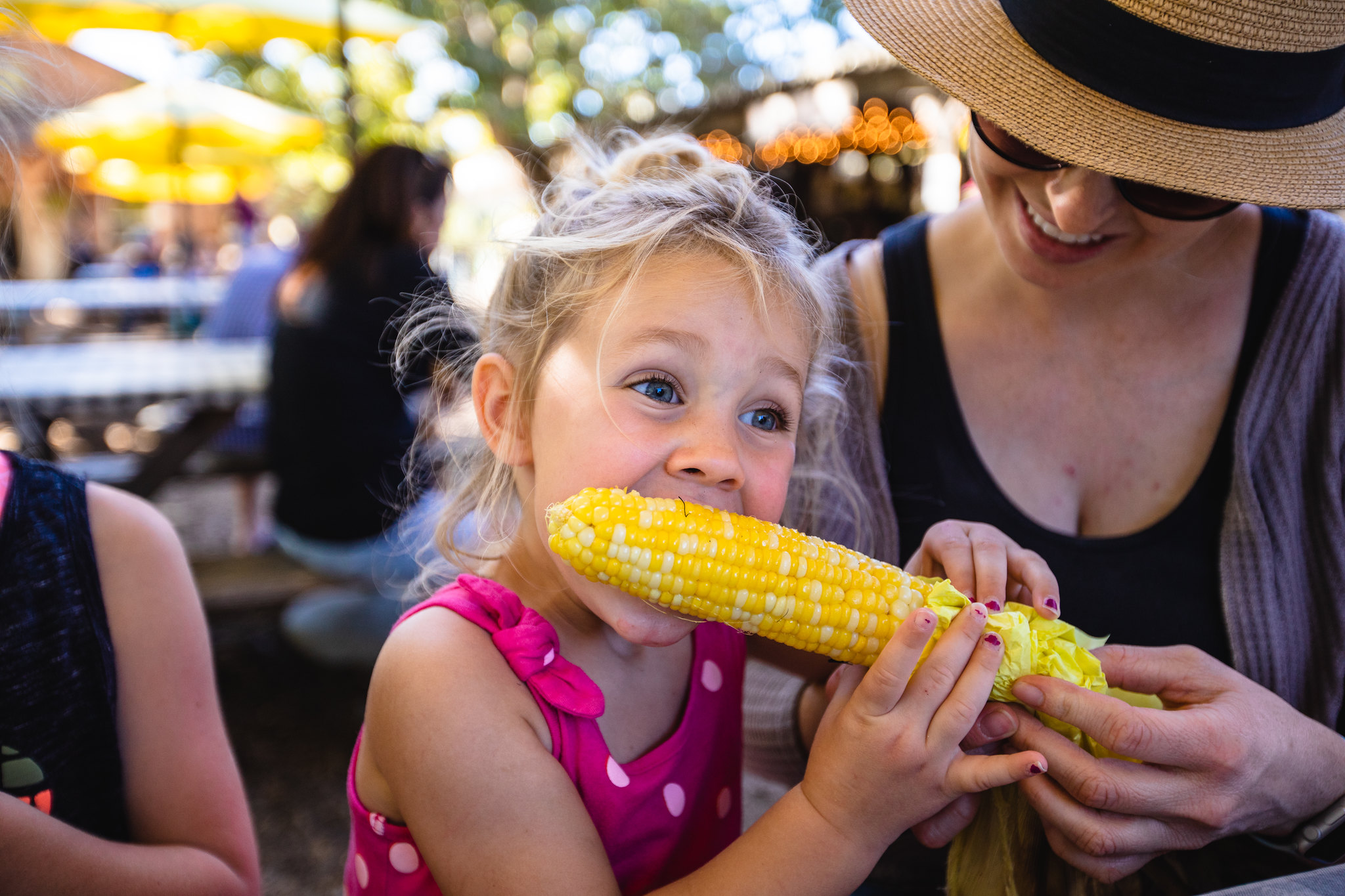January 1, 2025 by The StoryStudio
How often have you zoomed past a bird muttering, "I wonder what species that was?" or zipped by a vista point thinking, "That view looked awesome"? Slowing down in a car isn't easy, but the world opens around you when you just coast. A Highway 1 Road Trip also invites you to Travel for Good, an immersive opportunity to make a positive impact in this impressive environment. Take it slowly along here, and the natural world unfurls around you like the wings of a western monarch butterfly.
Speaking of monarchs, every winter, thousands of these astounding long-distance migrants “follow” the Western Monarch Trail from the Sierras to the mild temperatures of the Central California Coast. They roost in large clusters hanging like ornaments in butterfly groves along the Highway 1 Road Trip. Each morning, the butterflies "wake up," slowly flapping when the temperatures rise above 55 degrees. The morning show is like watching a Monet masterpiece come to life and take flight. Highway 1 along the SLO CAL coast is the winter flyway for the Western Monarch Butterfly. The Western Monarch Trail was created to learn more about their amazing migration and help protect the population so they flourish for years to come.
Your Guide to Wildlife Along Highway 1
Sponsored by Highway 1 Road Trip
Visit the Highway 1 Road Trip website and download the free Wildlife Map to plot your slowcation of discovery.
Though they migrate upwards of 1,000 miles, moving at a butterfly’s pace is the perfect way to explore a Highway 1 Road Trip. Perch above the Piedras Blancas Elephant Seal Rookery, and you'll observe one of nature's most remarkable comeback stories. Once hunted for their oil and fur to near extinction, elephant seals first appeared on San Simeon's beaches in 1990.
Today, close to 25,000 individuals put on a show here most months of the year. In December, 5,000-pound bulls spar to stake territory, followed shortly by the arrival of pregnant females and their yearling pups. Life’s best moments are rarely planned, like watching from only thirty feet away as a 1,500-pound female elephant seal gives birth to her 70-pound baby.
Nobody would ever call a bull elephant seal tiny unless you compare him with an 80,000-pound humpback whale, a 90,000-pound gray whale, or a 330,000-pound blue whale.
A Highway 1 Road Trip is much more than a series of stops. It’s an opportunity to cast an indelible memory when you see the largest animal on earth, a pod of killer whales, or a gray whale cow traveling north in tandem with her calf. The ten vista points located on the Highway 1 Road Trip are the most viewing areas on the west coast’s Whale Trail.
It isn’t only migratory sea mammals that show this 101-mile route is not just a drive but a destination. Resident species include amusing sea otters lolling about above the kelp beds and in the harbors. California sea lions and harbor seals pull out to nap on docks within easy view of the shoreline. Further out, bottlenose and Risso’s dolphins ride the surf and often surf the wake left by whale-watching tour boats.
When you put away your timeline and travel for good, nature comes out to play. Though best known for its zebra herd, Hearst Ranch’s abundant acres are also home to Roosevelt elk, bison, Sambar deer, and Barberry sheep. Watching these graceful beasts in their adopted habitat is a highlight of every Highway 1 Road Trip.
You can't help but wonder, "What's the rush?" when watching the Hearst zebras roam among the golden grassland, elephant seals mating on the beach, or sea otters teaching their pups to tear open a shell. Like the sunset, these images lift you up in a way that only nature can. Your breathing slows, and mundane thoughts disappear when you embrace this refreshing change of pace.

Download the Highway 1 Road Trip Wildlife Map and set out on a journey of discovery.
The Central California Coast is also among North America's richest environments for birdlife. Over 460 types of birds have been reported in San Luis Obispo County. The diversity of species, from California condors to several hummingbird species, is just as impressive. Catching sight of a rare avian visitor or a peregrine falcon storming a dunlin flock proves that life’s best moments can’t be planned.
You don't have to be a hardcore birder to giggle when watching a brown pelican dive into the Pacific or admire the elegance of the sandhill crane, its crimson crown offset against its milky white cheek. Resident great blue herons show how slowing down works, standing vigil for minutes before spearing an unsuspecting fish or frog swimming just below the water’s surface.
Winter presents an outstanding time to see up to 200 bird species along the Highway 1 Road Trip. Thousands of black brant geese also bring their vocal cacophony to the shoreline to feed among the eelgrass.
When you unclick the seatbelt and get out there, you may catch sight of a rare western snowy plover scurrying along the shoreline, a long-billed curlew probing the sand after a retreating wave, or a black oystercatcher hammering a stubborn shell. You’re surrounded by easily accessible birdlife, whether walking through the woodlands among songbirds, kayaking in the estuary beside grebes, or hiking in a canyon accompanied by a canyon wren’s distinctive melody.
Like hiking the trails on a Highway 1 Road Trip, slow is a beautiful pace. The Central California Coast offers abundant opportunities to settle into tide pool exploration. The intertidal zones near Cayucos, Avila Beach, and San Simeon present some of the most diverse habitats in North America. There's no rush when watching colorful sea stars, skittering crabs, and vibrant anemones, among many other species. Many of these habitats are fragile and can become unstable under too much human impact. To minimize your stamp on these precious creatures and their homes, read and practice our Wildlife Viewing Tips.
The more you slow down on a Highway 1 Road Trip, the better your chances are of discovering migratory whales, monarch butterflies, or a herd of zebras. And, by following a Travel for Good itinerary, you’ll uncover the fascinating web of wildlife and meaningful opportunities. Wildlife may always be on the move, but when you just coast, you’ll discover your destination is right where you need to be.











Download Map






Download Map









Download Map
The Chumash Nation has inhabited the Central California Coast for millennia, living in harmony with the pristine Pacific Ocean ecosystem. The Northern Chumash Tribe drove efforts for over ten years to designate this unique environment as a marine sanctuary. On October 11, 2024, the federal government established the Chumash Heritage National Marine Sanctuary, 116 miles of coastline encompassing 4,543 square miles. This preserve is the first Indigenous-nominated and managed marine sanctuary in the U.S. “Being able to address climate change, use traditional ecological knowledge, and participate in co-management is Indigenous peoples’ contribution to saving the planet,” says Violet Sage, chairwoman of the Northern Chumash Tribal Council.
Chumash Heritage National Marine Sanctuary






Download Map












From history to kayaking and romantic picnics to riding a horse on the sand, the beaches along a Highway 1 Road Trip leave no bucket (list) unturned.

